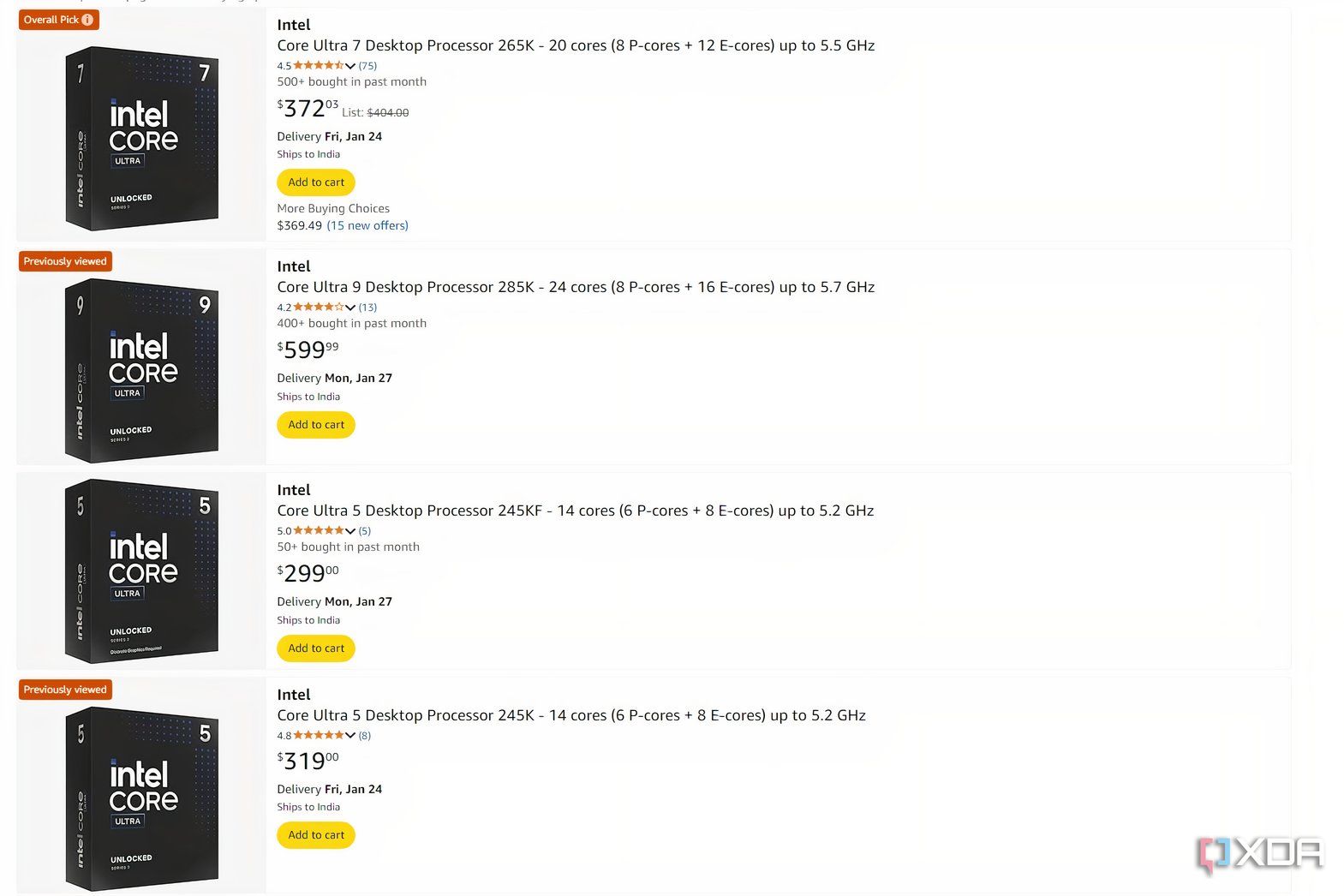Unless you’ve been living under a rock for a year (or you work at UserBenchmark), you’re probably aware that Intel’s going through a rough patch, to put it mildly. What started with crashes and overall stability concerns on Intel’s high-end 13th and 14th Gen Core CPUs worsened with the disappointing Core Ultra launch.
AMD’s Ryzen 7 9800X3D wiped the floor with every other CPU on the market, and Intel’s desktop offerings didn’t have a compelling offering in gaming or productivity departments. Combine that with the persistent sky-high power consumption and no sign of prices accurately reflecting Intel’s current standing in the market, and you have the perfect storm shattering any hopes of revival for Team Blue. As things stand, desktop builders should steer clear of Intel for the foreseeable future.
Related
5 things I want from the PC hardware industry in 2025
With 2024 delivering one debacle after another, I have my PC hardware wishlist ready for 2025
5
Gaming performance is at an all-time low
How the turntables…
Starting with gaming, Intel’s Core i9-14900K had already lost the crown to AMD’s Ryzen 7 7800X3D, with the X3D processor leading by around 8-10%. With the launch of the Ryzen 7 9800X3D, however, AMD’s lead shot up to a massive 25% on average, compared to the 14th Gen flagship. Consumers were hoping to see some wins from Intel’s Core Ultra CPUs launching in late 2024, but those hopes were misplaced.
The Core Ultra 9 285K ended up being around 30% slower than the Ryzen 7 9800X3D, unable to beat even the Core i9-14900K. Even the previous-gen Ryzen 7 7800X3D is faster than the Arrow Lake flagship, highlighting Intel’s worst showing in gaming in years. AMD’s Ryzen 9000 launch might have been disappointing in its own way, offering barely 5% gains in gaming over Ryzen 7000, but mid-range chips like the Ryzen 7 9700X can still beat the latest and greatest Intel processor.
This has left Intel in a weird spot. For enthusiast gamers chasing the best framerates, AMD’s X3D CPUs are unparalleled, and for everyone else looking for a budget or mid-range gaming CPU, AMD has the Ryzen 5 7600 and Ryzen 7 9700X, respectively. Things are better for Intel in non-gaming workloads, but even that has issues of its own.
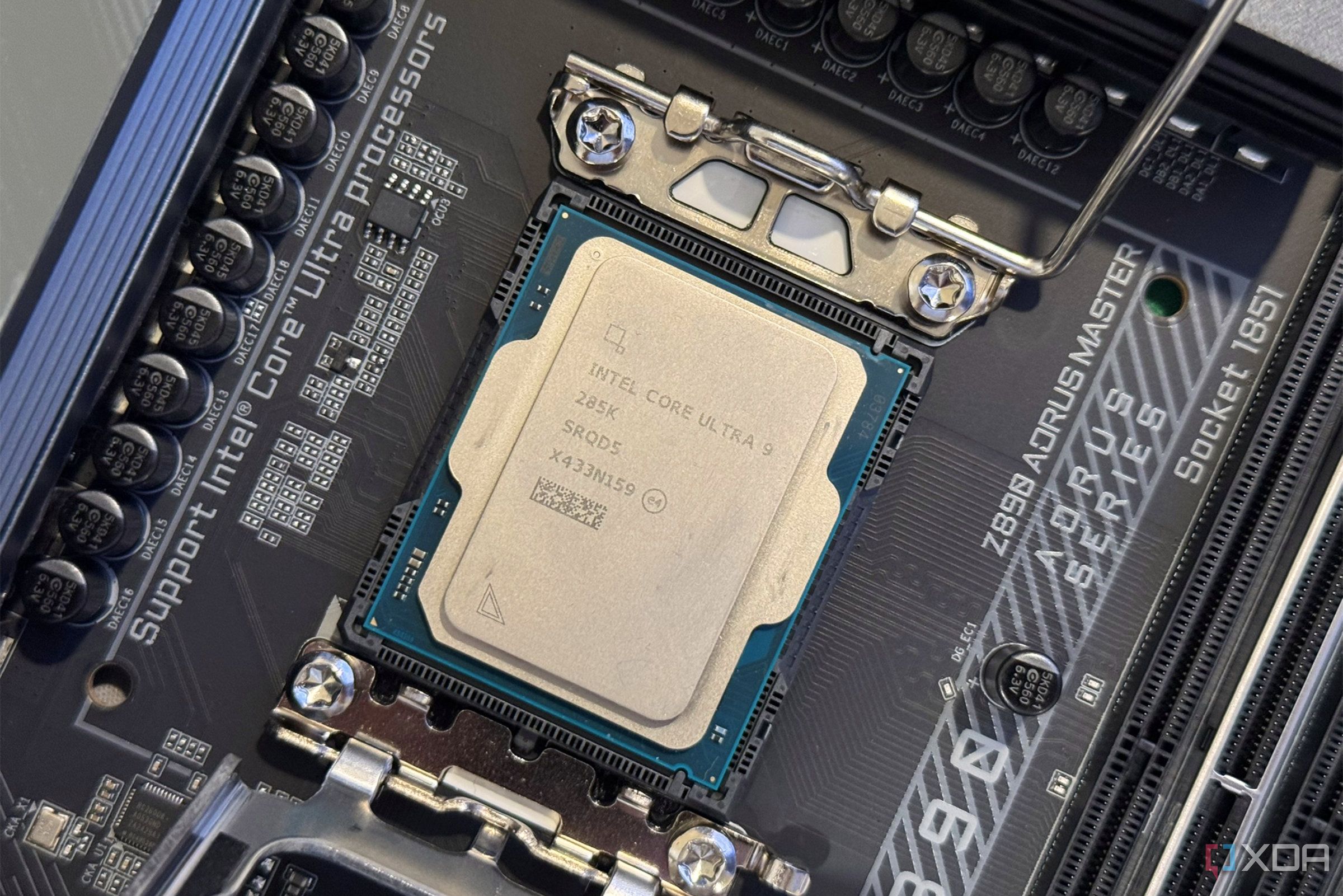
Related
Intel will be stronger than ever in 2025 – here’s why
Despite its somewhat disastrous 2024, there’s reason to believe Intel will be back with a vengeance next year
4
Productivity performance is all over the place
A mixed bag
Intel’s newest flagship, the Core Ultra 9 285K, showed strong results in productivity workloads, but it wasn’t the universal slam dunk Intel hoped it would be. Sure, its Cinebench scores were the best, beating the Ryzen 9 9950X and the Core i9-14900K, but it couldn’t conclusively beat even the previous-gen Ryzen 9 7950X in many of the workloads. In Adobe Photoshop, it inexplicably ranks among the poorest processors.
Intel’s Core i9-14900K was, and still is, among the best productivity CPUs on the market. The problem is, however, that it too lags behind the Ryzen 9 7950X and Ryzen 9 9950X in popular benchmarks. The picture becomes even darker for Intel when you consider Adobe Photoshop, where the 14900K trails behind even the 6-core chips from AMD. Plus, even in Adobe Premiere Pro, where the 14900K is excellent, it isn’t much faster than the Core i7-14700K, and falls behind the 9950X.
Even the cheaper Core Ultra 7 265K is slower than the older (and cheaper) Core i7-14700K in benchmarks such as 7-Zip, Photoshop, and Premiere Pro, and lags behind the similarly priced Ryzen 9 7900X. Comparing the Core Ultra 5 245K and Core i5-14600K, the 6-core Arrow Lake chip is faster than its predecessor in quite a few benchmarks by around 7-8%, but is slower in some other workloads. And the Ryzen 7 7700 beats it in quite a few examples.
Overall, Arrow Lake fared relatively better in productivity than gaming, but didn’t offer much to be excited about.
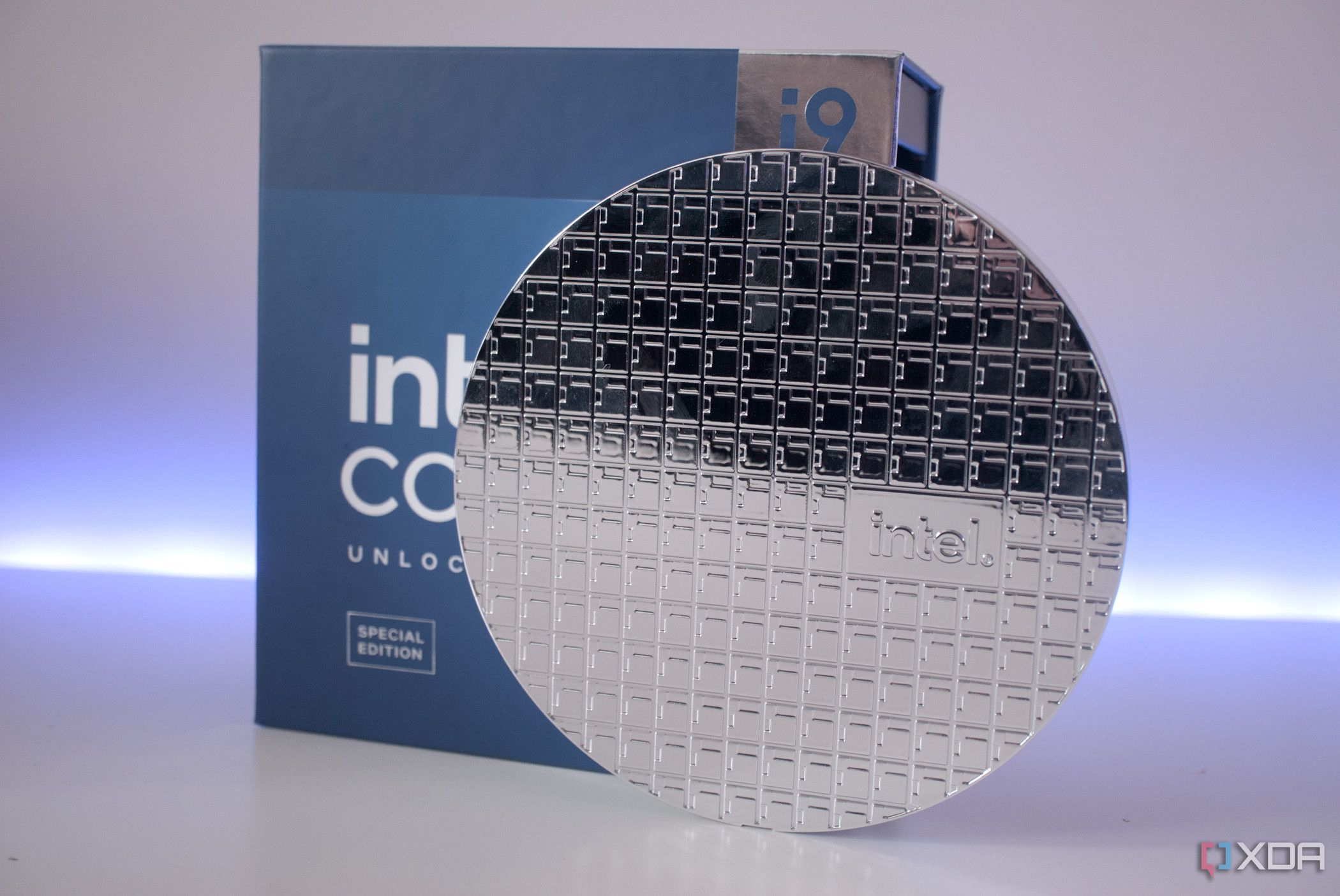
Related
Intel goes from bad to worse, giving up on 20A for Arrow Lake
Arrow Lake was meant to be on Intel’s new 20A node, but now it’s going to “external partners” instead.
3
Thermal efficiency is still terrible
From scalding hot to boiling hot, but still bad
Intel isn’t known for designing processors that run cool, but things have gone from bad to worse over the years. The 14th Gen series was particularly hard to run with anything but the most powerful CPU coolers, and the Core i9-14900K was known to thermal throttle even at stock settings and have a 360mm AIO cooler.
With Arrow Lake, Intel managed to bring down the power consumption and, thereby, improve efficiency, but the gains are minimal. The Core Ultra 9 285K, for instance, still draws way more power than, say, the Ryzen 9 9950X, Ryzen 9 7950X3D, and Ryzen 7 7800X3D. It looks better than the 14900K, sure, but compared to the competition, things are far from where they should be for users to look past Arrow Lake’s other drawbacks.
It would be one thing if the Arrow Lake chips somehow justified their high power consumption by performing better than the competition, or even the 14th Gen CPUs. That not being the case makes the poor thermal efficiency that much harder to digest. AMD’s Zen 5 CPUs, meanwhile, have improved on the already excellent efficiency of their Zen 4 counterparts.
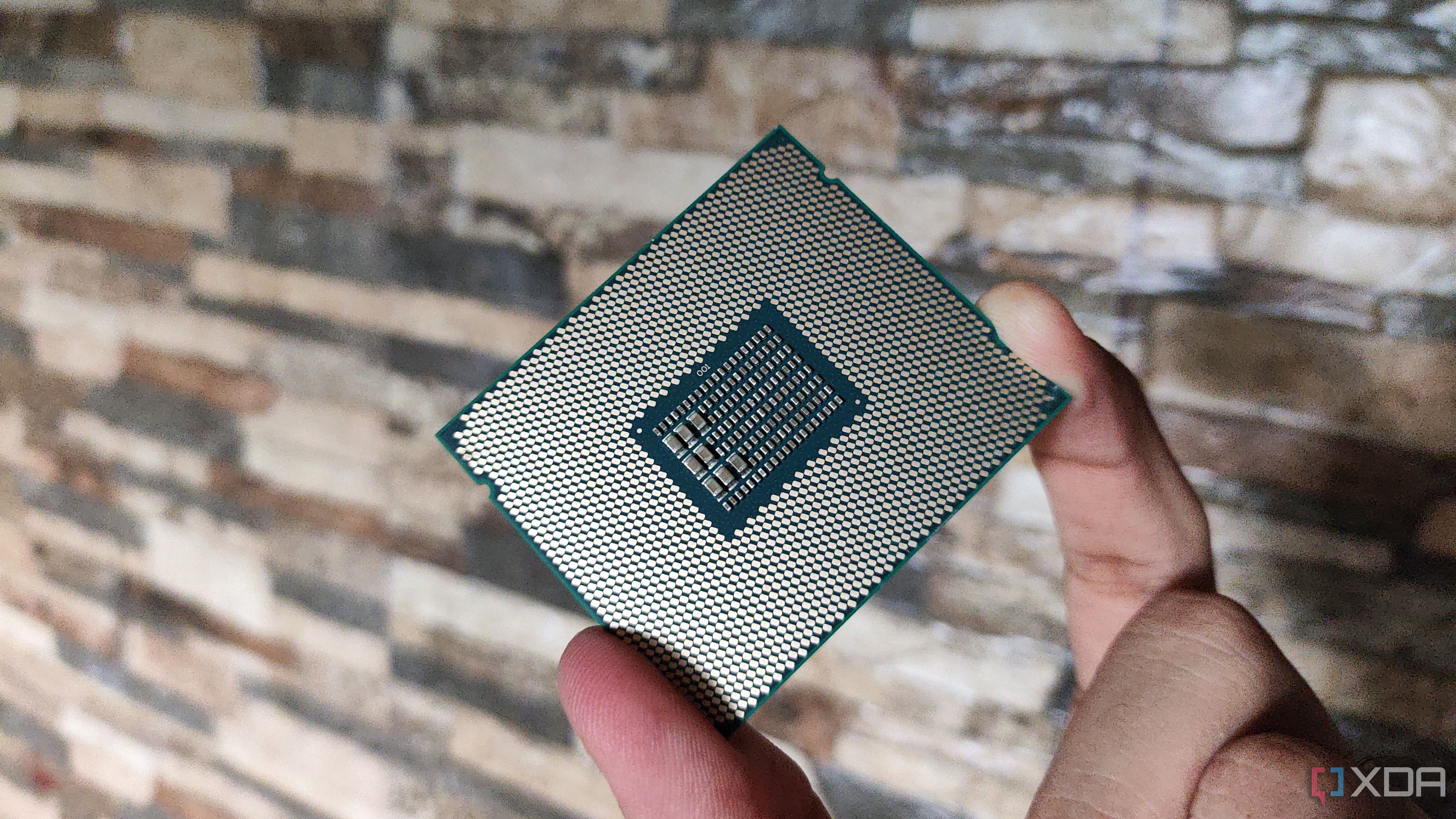
Related
4 reasons right now is the worst time to move to a new CPU platform
There isn’t a worse time than the present to build using the latest CPU platform
2
Both Arrow Lake and 14th Gen have stability problems
Intel just can’t catch a break
There’s probably no one left who doesn’t know about Intel’s 13th and 14th Gen CPUs randomly crashing over the last year or so. Intel investigated the reports and confirmed the CPUs were crashing due to elevated voltages and initially blamed motherboard manufacturers for running the processors “out of spec”. Over the next few months, the company shipped multiple microcode updates to fix the issue, but confirmed that any damage done to the chips was permanent.
While the crashes and aberrant behavior have reportedly been fixed now, I wouldn’t place my trust in a 13th or 14th Gen CPU right now. People are still reporting crashes on their Raptor Lake chips, long after Intel’s “final” microcode update. Even if you don’t want to trust anecdotal evidence, why take the risk? There’s certainly no upside to saving a few dollars and finding out the underlying problems haven’t been rooted out.
Even the latest Arrow Lake processors are experiencing memory instability issues, with our own Joe Rice-Jones having to experiment with around a dozen memory kits to find one that allowed his Core Ultra 9 285K to boot. Seeing Intel’s track record of dealing with this fiasco, I don’t know how deep the 14th Gen or Arrow Lake problems go. Plus, for productivity workloads, stability, and reliability are top priorities. If you can’t trust your system to run without issues, you might as well ditch Intel and get a capable AMD Zen 4 or Zen 5 processor.
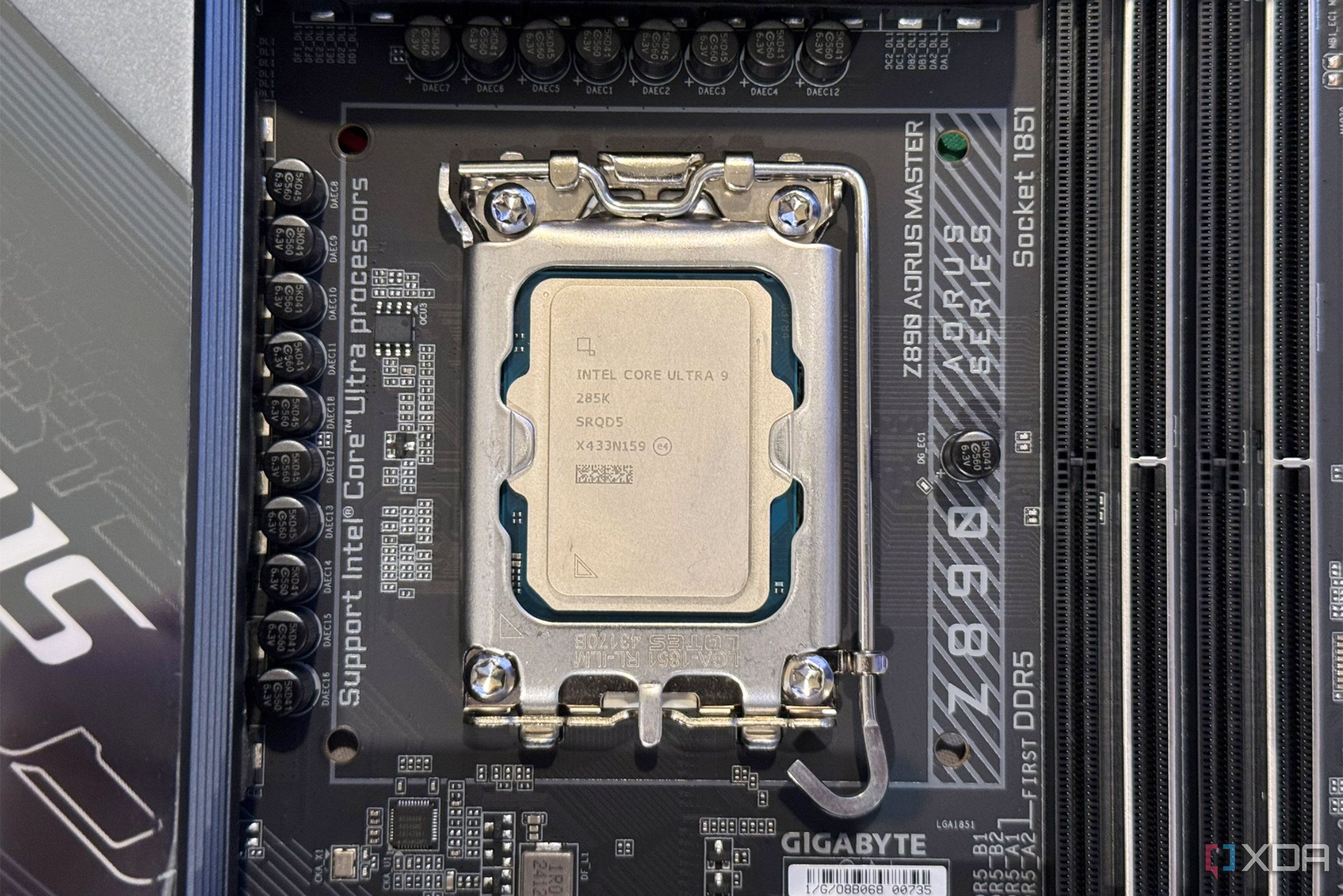
Related
Intel has a serious problem with Arrow Lake and memory compatibility
Intel’s XMP specifications are usually rock-solid, but on Arrow Lake it’s anyone’s guess if RAM will run at its rated speed.
1
Prices are not where they need to be, all things considered
The “arrow” is not moving in the right direction
Intel’s Core Ultra CPUs might have launched at virtually the same prices when pitting comparable SKUs against each other, but they sure feel a tad expensive when you factor in all the downsides. Even if you compare, say, the Core Ultra 285K and Core i9-14900K, you’re paying around $170 more for the 285K for a not-so-impressive uplift. The Core Ultra 7 265K and Core Ultra 5 245K, meanwhile, are around $50 and $100 pricier than their respective predecessors (at the time of writing).
Even if you factor in the stability concerns of the 14th Gen lineup, the Core Ultra CPUs aren’t that competitive with AMD either, from a value standpoint. The Arrow Lake processors are obviously massacred in gaming by AMD’s X3D CPUs, but can’t even beat the way cheaper 6-core and 8-core Zen 5 CPUs. Even against productivity CPUs like the cheaper Ryzen 9 7950X, the Core Ultra 9 285K is hard to recommend at the current price.
Intel should have already introduced price cuts to almost all of its Arrow Lake SKUs to make them at least a bit more attractive against the competition. The fact that Intel hasn’t done that indicates the company has no intention of competing for value, and hopes to sell enough units to its still-loyal fanbase.
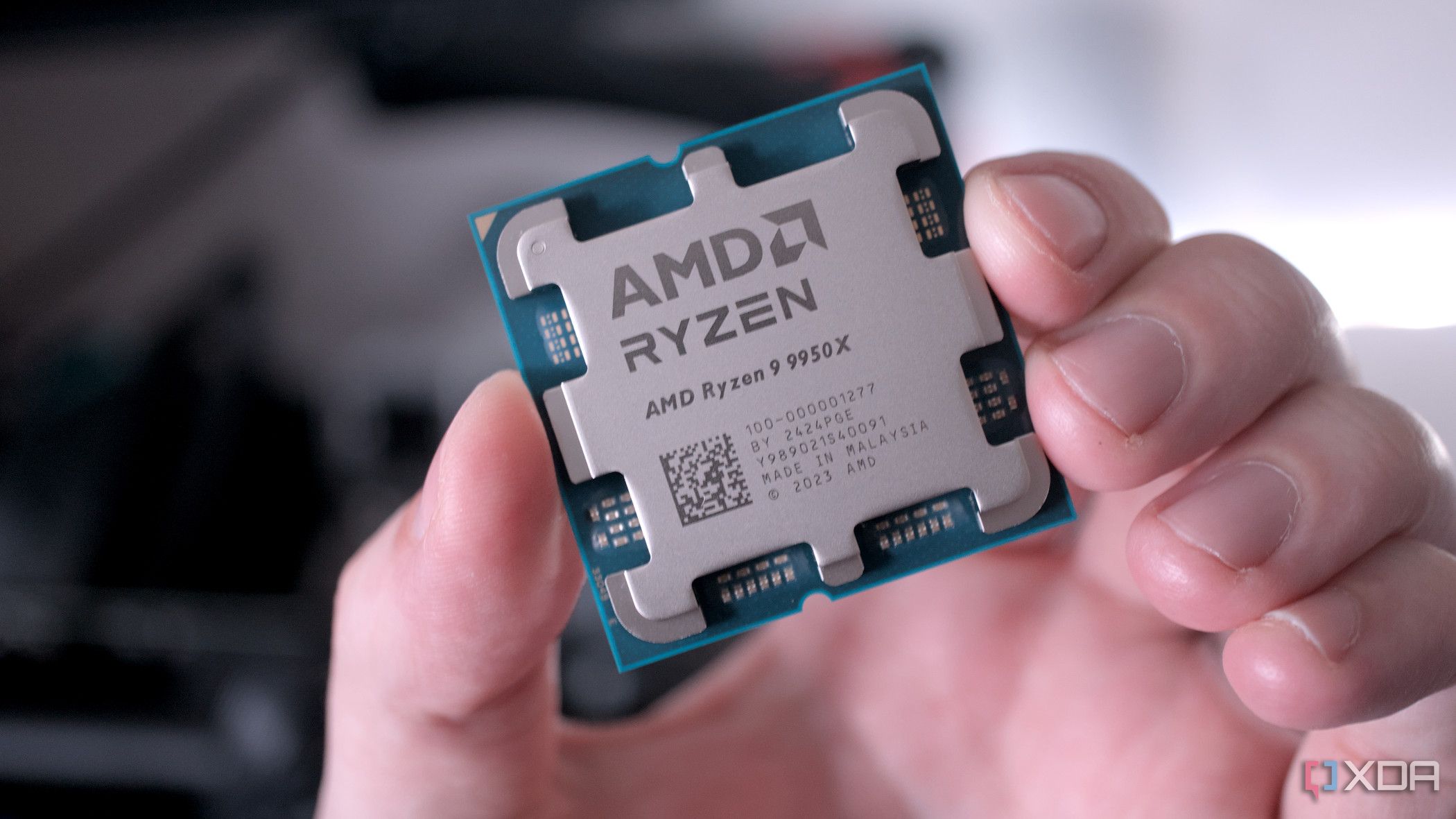
Related
Don’t buy an Intel Arrow Lake CPU, get one of these instead
Intel’s new Arrow Lake CPUs are here, but they’re not quite ready for prime time. If you’re building a PC now, check out these CPUs instead.
Intel might bounce back, but the journey will be long
With all the problems plaguing Intel right now, it will take at least two more generations for Team Blue to become competitive with AMD. That is, if the company has plans to do so already. Intel isn’t launching a new generation of CPUs in 2025, with Nova Lake set to arrive only in 2026. We might get an Arrow Lake refresh, or at least some price cuts in 2025, but that would hardly move the needle.
Nova Lake, in all likelihood, would not be able to beat AMD in gaming — Team Red’s lead is just too much at this point. In productivity, we might see Intel offer some value products with lower prices and power consumption. That’s the best-case scenario I’m hoping for. Any comeback from Intel will have to wait for when the company is ready with the Nova Lake successor. However, all this is based on the assumption that AMD rests on its laurels the whole time, which isn’t realistic either.

